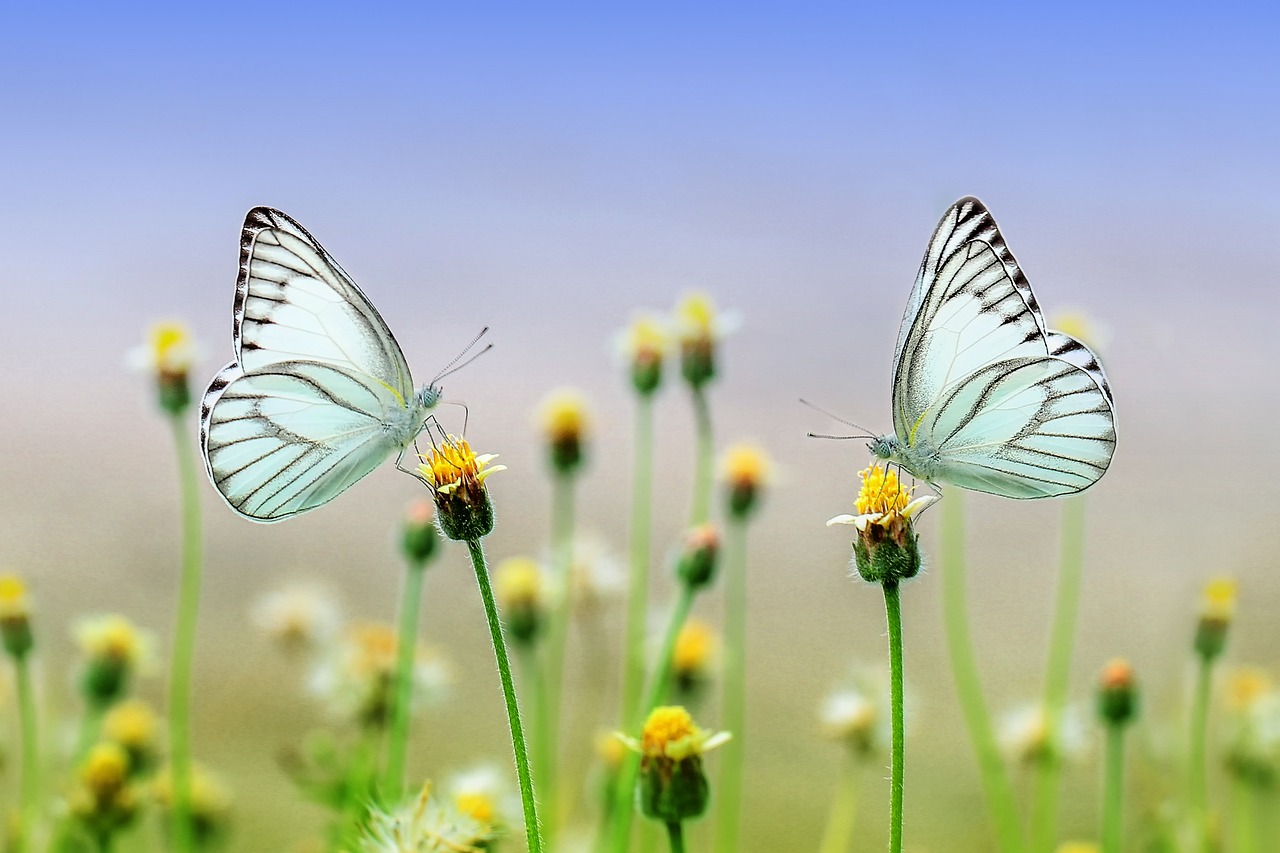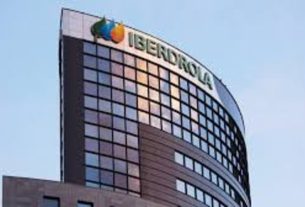|
Getting your Trinity Audio player ready...
|
Authors Hollie Blaydes and Alona Armstrong describe their latest research to better understand how pollinators respond to increasing solar park developments.
Ground mounted solar parks are becoming increasingly common features of our landscapes and are set to play a pivotal role on the path to net zero. Currently taking up ~15,000 hectares across the UK, more land will be needed for solar parks to meet renewable energy goals.
Although land use change is one of the largest threats to biodiversity, solar parks present a unique opportunity to create valuable habitats if in the right place and managed well. Habitat creation for biodiversity is possible within the footprint of solar parks as they are relatively low impact developments. Solar parks are also often built on ex-arable or pastureland, which are typically species-poor and often intensively managed, meaning there is much potential to boost biodiversity.
Promoting pollinators at solar parks
As some pollinator groups have undergone population declines, mostly due to habitat loss and degradation, habitat creation within solar parks might benefit groups like bumblebees and butterflies.
A growing body of evidence suggests there could be more pollinators (and more species) at solar parks managed with biodiversity focus. The wider landscape context is likely to have an impact too, as most pollinators are mobile and will interact with habitats outside of the solar park boundary.
But what exactly is driving pollinator biodiversity in this potential new habitat?
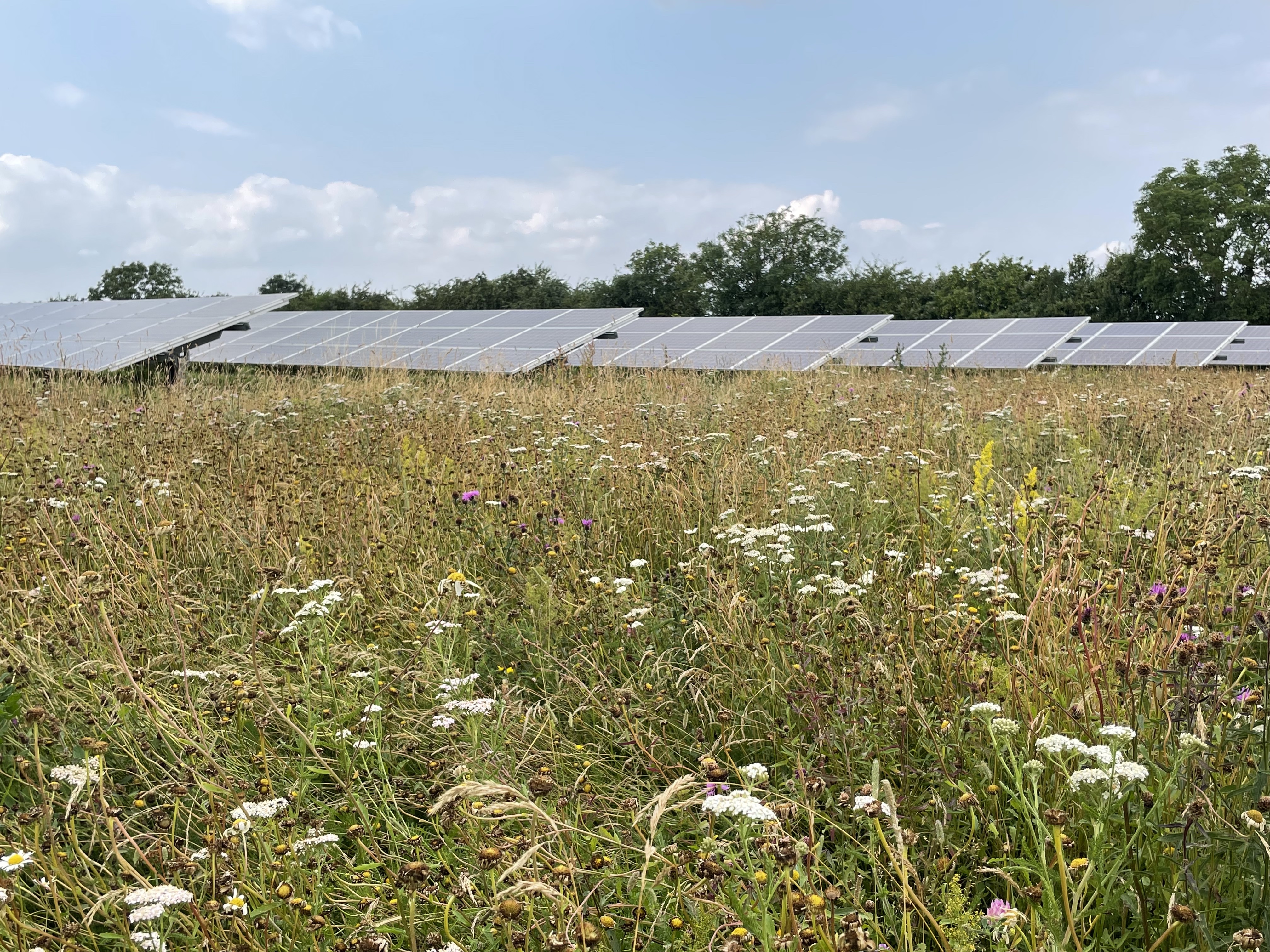
Investigating the factors affecting pollinators at solar parks
During field surveys of solar parks across England, we counted the number of individuals and species of pollinator between rows of solar panels, as well as recording the number of flowering plant species and their cover.
Zooming out, we characterised the wider landscape, focusing on (i) the area of other suitable pollinator habitat nearby and (ii) the amount of woody linear features (hedgerows, woodland edges and lines of trees) that help connect habitat patches in the solar park surroundings.
Local and landscape scale drivers
Within the solar park, the number of flowering plant species was the most influential factor over pollinators, with a higher number of flowering species associated with more bumblebees, butterflies and hoverflies.
In the surroundings, a greater density of woody linear features were associated with a lower abundance and diversity of pollinators within the solar park, in some cases. This might seem counterintuitive, but features like hedgerows provide food resources, can support breeding pollinators, offer shelter and connect habitat patches in the landscape and could therefore attract pollinators from the solar park.
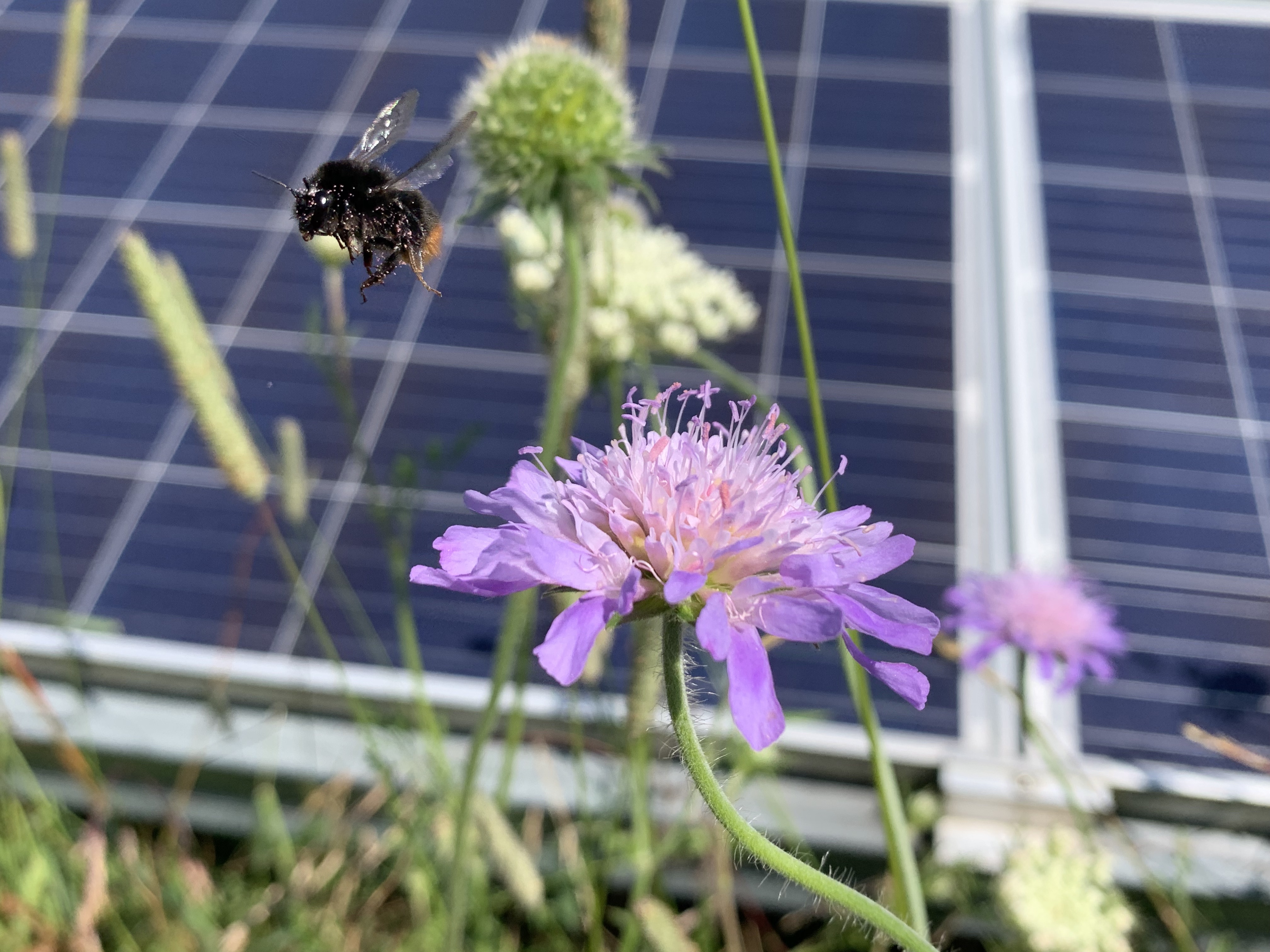
This suggests that a combination of local and landscape scale factors impact pollinator biodiversity at solar parks.
Implications for solar park management
Ideally, a landscape approach to management would be taken, where solar parks host suitable pollinator habitat and are well connected to other habitat patches in the surroundings.
Where this is not possible, the solar industry should focus on in-park modifications and the best way to support pollinators might be to encourage more flowering plant species. Sowing a floral-rich seed mixture or using wildflower plugs to promote a diverse plant community could be effective. Avoiding cutting or grazing flower rich habitats when pollinators are most active would ensure flowering plants are available when most needed. But, this may not be compatible with management needs to maximise electricity production.
Management approaches that balance the operational needs of the solar park, whilst ensuring flowering plants are available for pollinators should be achievable at most locations. Cutting a narrow strip of vegetation in front of the solar panels, but leaving the rest of the row uncut, is one such approach. Rotational cutting or grazing could be another option, making sure flowering plants are always available somewhere (and not in front of the panel rows). If all vegetation between the rows of solar panels needs to be cut, this could be done at a higher height.
If the site is grazed, livestock numbers could be reduced or they could be removed at certain times of the year. Biodiversity enhancements could also be focused away from solar panels (i.e. in margin areas) to avoid the risks of panel shading impacts completely. A wide range of management interventions can be applied, but the best approach will depend on the habitats present, management contracts and financial resources and should be tailored to each solar park.
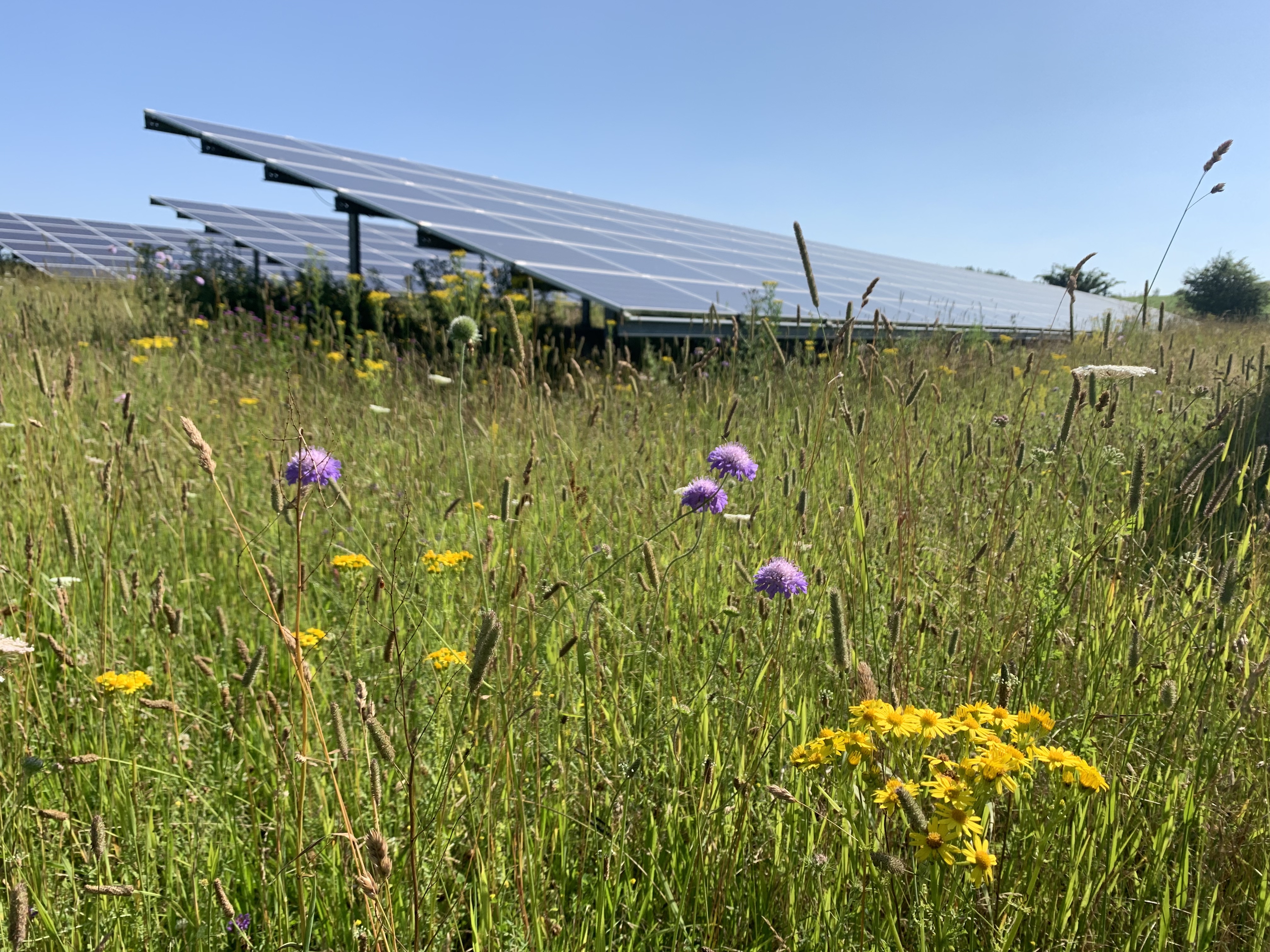
Our research shows that effectiveness of management approaches might also be moderated by the surrounding landscape. Solar parks managed with pollinators in mind in landscapes with few other pollinator-friendly habitats, or habitats that are inaccessible or disconnected, are likely to be more valuable to pollinators than those in well-connected landscapes with a larger proportion of appropriate pollinator habitats. Solar park managers with multiple solar parks could therefore target pollinator-focussed management where it will have the most benefit.
Read the full article: “On-site floral resources and surrounding landscape characteristics impact pollinator biodiversity at solar parks” in Ecological Solutions and Evidence.
